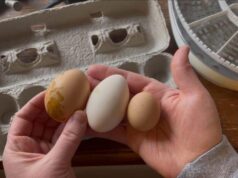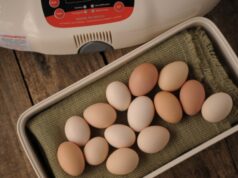The fascinating world of egg production and nesting box use is a vital aspect of poultry care that every chicken enthusiast should understand. Whether you’re a seasoned chicken keeper or new to this rewarding hobby, optimizing egg production and ensuring proper nesting box use can significantly impact the health and productivity of your flock. In this article, we will explore the intricacies of egg production, the importance of nesting boxes, and how you can create an environment that maximizes both.

The Science Behind Egg Production
Understanding how a hen produces eggs is fundamental to improving egg production. A hen’s reproductive system is complex, with several stages involved in the formation of an egg. From ovulation to the laying process, each step is crucial for a healthy egg. Factors like diet, lighting, and stress levels can influence this process.
Diet and Nutrition
A balanced diet rich in calcium and protein is essential for optimal egg production. Ensuring your hens receive the right nutrients will lead to stronger shells and more frequent laying. Consider supplementing their feed with oyster shells or other calcium sources.
Lighting and Environment
Lighting plays a critical role in stimulating a hens reproductive cycle. Hens require about 14-16 hours of light each day to maintain consistent laying patterns. Adjusting light exposure can help regulate egg production, especially during shorter winter days.
Importance of Nesting Box Use
Nesting boxes provide a safe, comfortable place for hens to lay their eggs. Proper use of nesting boxes not only encourages laying but also protects eggs from damage and theft by other chickens. A well-designed nesting box can make a significant difference in the cleanliness and quality of the eggs collected.
Designing the Perfect Nesting Box
A well-crafted nesting box should be cozy, private, and easily accessible. Using DIY nesting box ideas can be an affordable way to meet these requirements. The right design encourages hens to use the boxes, reducing the likelihood of eggs being laid elsewhere.
Placement and Maintenance
The location of your nesting boxes can influence their use. They should be placed in a quiet, low-traffic area of the coop, away from feeding and roosting areas. Regular maintenance, including cleaning and replacing bedding, ensures that the boxes remain attractive to hens.
Common Challenges in Egg Production
While raising chickens can be rewarding, it comes with its set of challenges. Some common issues include decreased egg production, broken eggs, and broodiness.
Decreased Egg Production
Several factors can cause a drop in egg production, such as stress, illness, or changes in diet. Identifying and addressing these issues promptly can help restore normal laying patterns. For more insights, check out our daily egg collection tips.
Preventing Broken Eggs
Broken eggs can be a nuisance and lead to waste. Ensuring that nesting boxes are properly cushioned with bedding can minimize breakage. You can learn more about this in our article on avoiding broken eggs.
Dealing with Broodiness
Broody hens can disrupt egg collection and reduce production. Managing broodiness involves removing hens from the nest and providing distractions to break the cycle.
Enhancing Egg Quality
High-quality eggs are a reflection of good poultry management. Factors such as shell strength, yolk color, and taste can all be improved through careful management of diet and environment.
Shell Strength
Strong shells are essential for protecting the egg’s contents. Ensuring adequate calcium intake is key to enhancing shell strength. Consider using organic bedding to provide a comfortable laying environment.
Yolk Color and Taste
The color and taste of egg yolks can be influenced by the hens diet. Incorporating greens like spinach and kale can enhance yolk color and flavor.
Conclusion
Mastering egg production and nesting box use is a rewarding endeavor for any chicken lover. By understanding the science behind egg production, optimizing nesting box use, and addressing common challenges, you can ensure a healthy and productive flock. For additional resources and tips, consider exploring creative nesting box ideas. Happy chicken keeping!

FAQs
What is the best material for nesting boxes?
Wood is commonly used due to its durability and insulation properties. However, plastic and metal can also be effective, especially when considering ease of cleaning and sanitation.
How many nesting boxes do I need for my flock?
A good rule of thumb is to provide one nesting box for every 3-4 hens to ensure that there is enough space and reduce competition.
How can I encourage hens to use the nesting boxes?
Placing fake eggs or golf balls in the nesting boxes can encourage hens to lay there. Keeping the boxes clean and providing fresh bedding also helps.
This article contains affiliate links. We may earn a commission at no extra cost to you.











